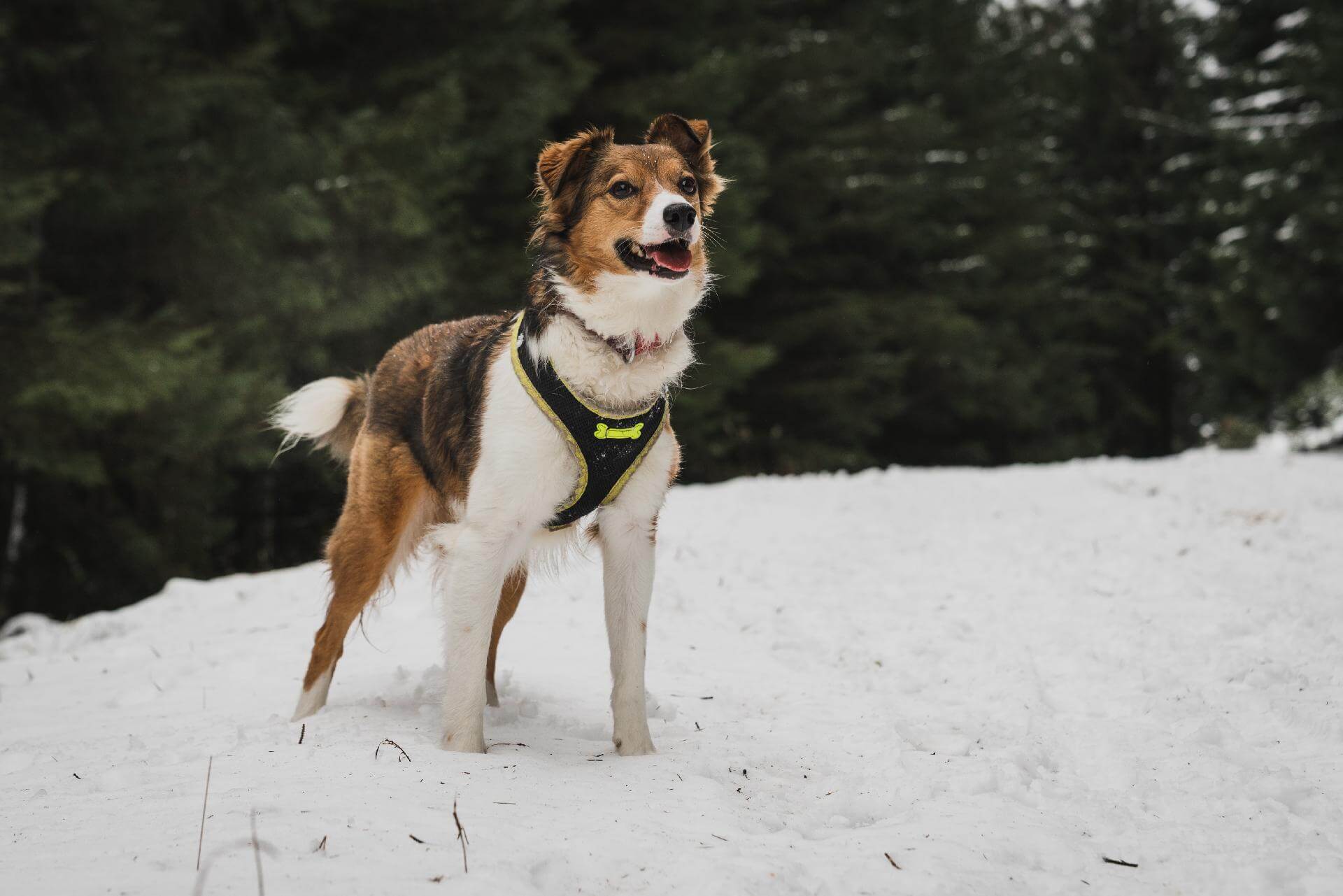Is your dog an escape artist? Even when you think you tied harness perfectly somehow, he still manages to escape?
We had the same problem. No matter what we tried, some of our dogs always managed to squirm their way out of it. After doing a lot of research and trying many different harnesses, we were able to find the following best escape proof dog harnesses. We also discovered the biggest reason that dogs tried to escape and how to avoid it. But more about that later.
Top 5 Best Escape Proof dog harnesses.
Ruffwear Webmaster Harness
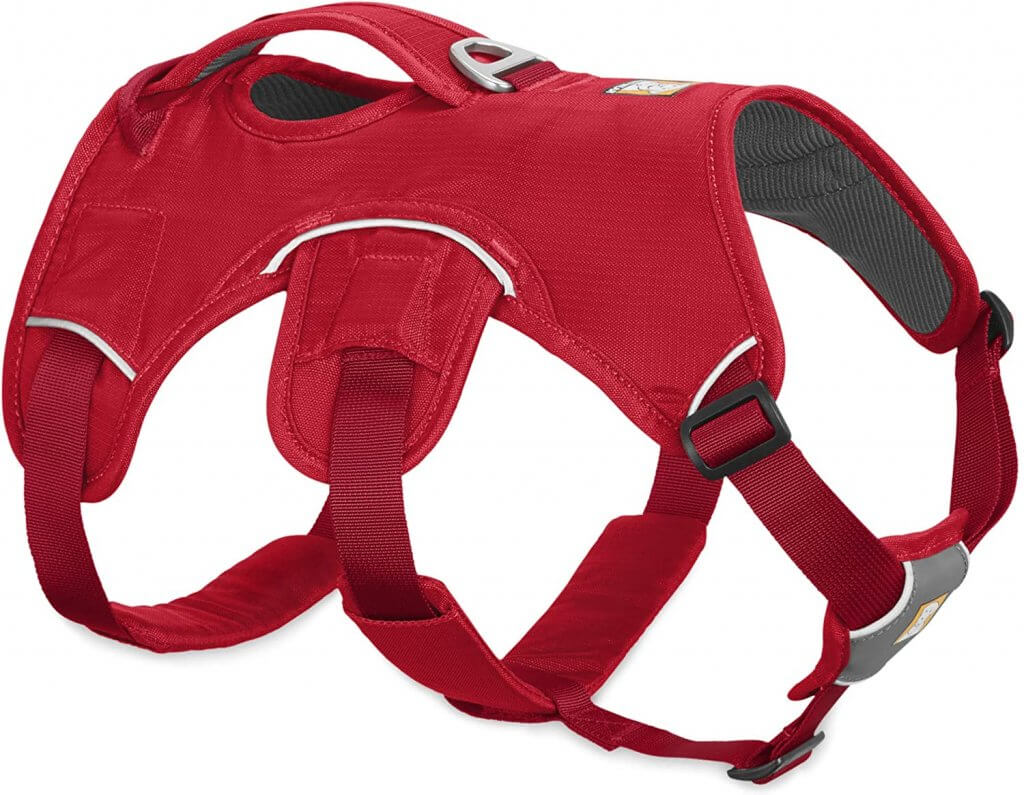
The Ruffwear Webmaster Harness is the most advanced escape proof dog harness that you can find. The designers went to great lengths to design a comfortable and protective harness for your dog. You get two leash attachment points for different levels of control. One sits in the middle of the harness and the other in the back. Depending on your dog, you might prefer either one. All attachments and webbing are made of extremely high-quality nylon webbing.
Aside from the attachment points, you also get a padded handle right in the center of gravity of your dog. This handle is a great help if you need to quickly take control of your dog or help it over an obstacle.
The Ruffwear Webmaster Harness is not only convenient and comfortable for you but also for your dog. The padding on the straps is thick and durable and designed to be comfortable during long walks and when wet.
You can easily adjust it using the five adjustable straps and get a perfect snug fit. A good adjustment is crucial to prevent escaping, as we’ll talk about later. If you often walk in the dark or bad weather, you will love the reflective material on this harness and the option to add a beacon light.
The Ruffwear Webmaster is our #1 recommended escape proof dog harness because of the great design, high-quality materials, and attention to detail. It’s not the cheapest dog harness but more than worth it. Check price here.
Cozy Meadow Escape Proof Dog Harness
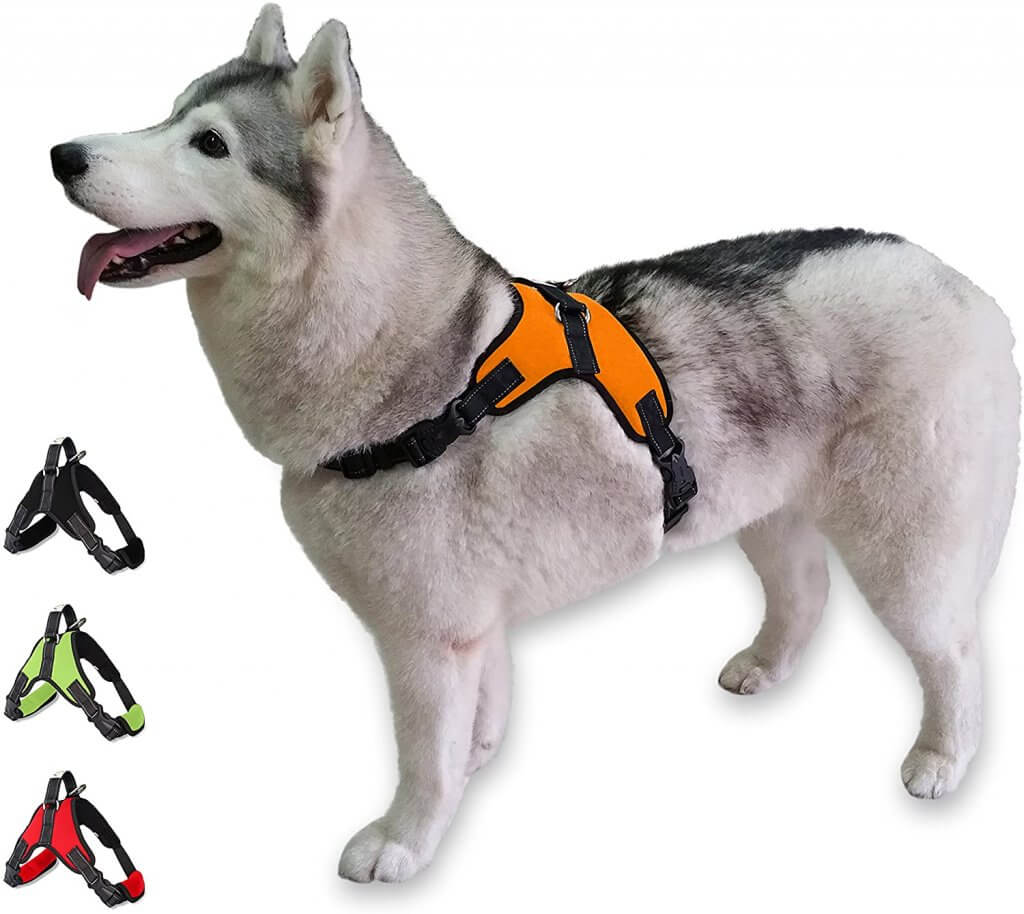
The Cozy Meadow Escape Proof Dog Harness is a lot cheaper than the other harnesses on his list. But, it doesn’t compromise on design and quality.
This harness uses a different design to prevent your dog from escaping. It fits around the shoulders and doesn’t put any pressure on the throat. Throat injuries are common with badly designed or wrongly fitted dog harnesses. The webbing and padding are comfortable and designed to prevent chafing even during long walks or when your dog is wet.
This harness also features reflective materials, but instead of reflective strips, they were actually woven into the fabric. Your dog will be visible for drivers, and you won’t have to worry about the reflective strips wearing off.
You also get a safety handle on the top of the harness in case of emergencies. If the need arises, you can quickly grab and secure him or her.
If you’re looking for the best value in an escape-proof dog harness, look no further. The Cody Meadow dog harness is well-designed, extremely affordable, and made of high-quality materials. Check price here.
IceFang Tactical Dog Harness
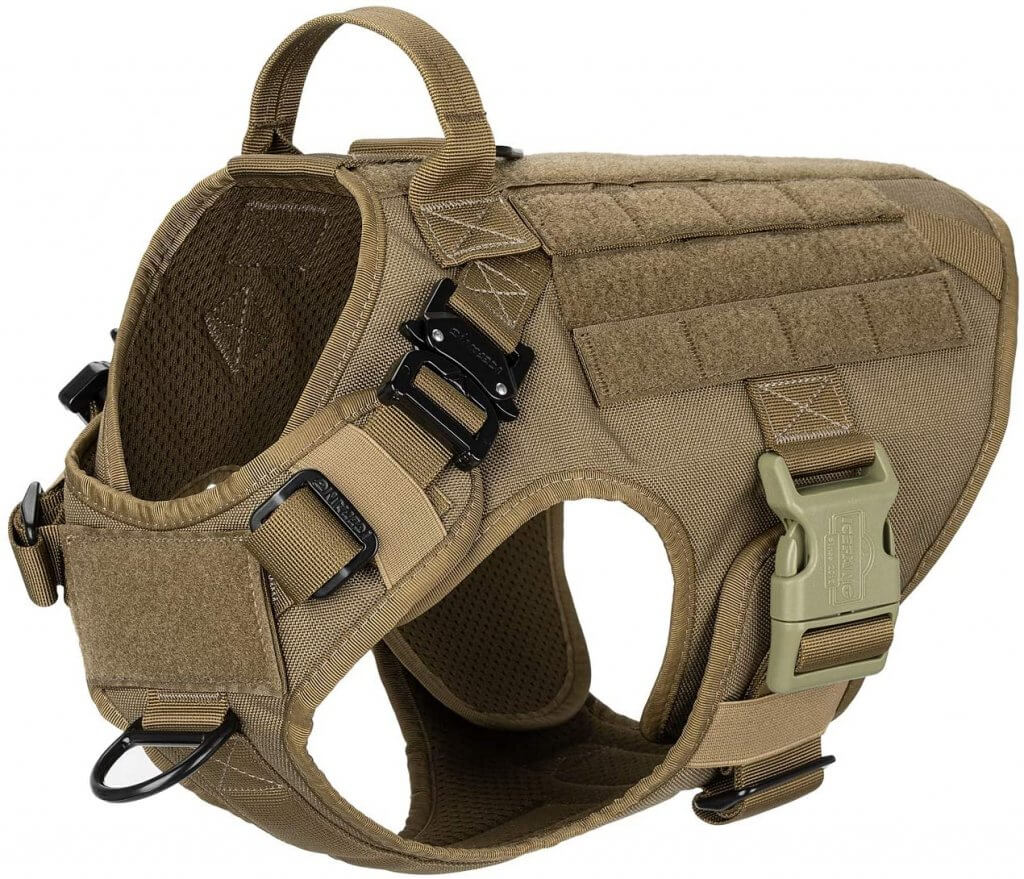
If you spend a lot of time outdoors, we recommend the IceFang Tactical Dog Harness. This harness is fully adjustable and fits in a way that makes escape impossible. The webbing and padding are made of industrial quality materials and come in a camouflage color to blend in with the surroundings.
On top of the harness, you get a strong handle to control or lift your dog quickly. Another interesting feature of this harness is the extra leash attachment points. The front clip is designed to make it easier to direct your dog in the right direction.
The IceFang tactical escape-proof harness is perfect for strong working dogs. You can easily adjust it to your dog and make sure that he or she remains safely with you at all times. Check price here.
Gooby Escape Free Sport Harness
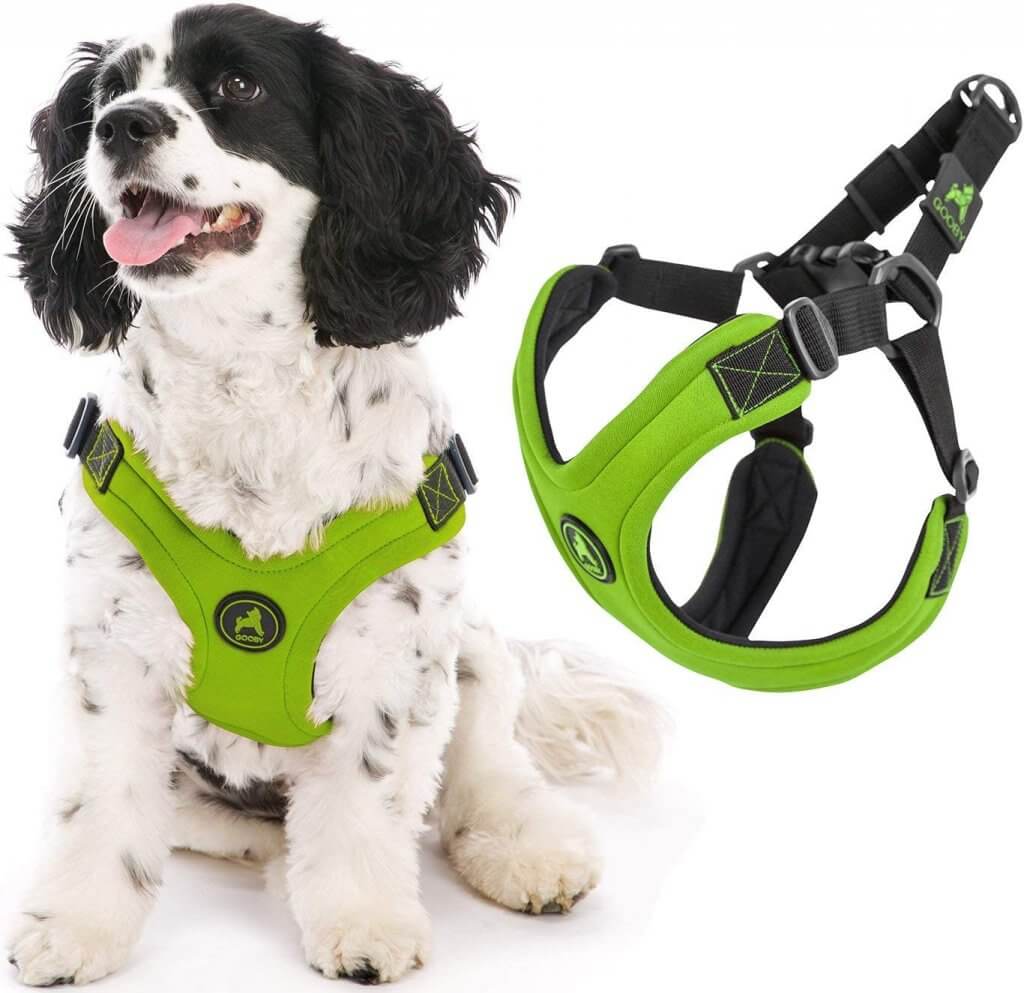
Where the IceFang is designed for working dogs, the Gooby Escape-Free Sport Harness is designed for house dogs. Small dogs are often more likely to escape a harness than big dogs. This harness tries to make that impossible by fitting really close to the back of the shoulders. When there’s no space, your dog can’t pull back and get its shoulders free.
Another reason we really liked his harness is that it never put any pressure on the neck. The chest and backstraps are designed in such a way that your dog’s neck is safe when he or she tries to pull away.
Made from a durable and comfortable neoprene material, this harness will help you keep your dog secure and comfortable for a long time.
If you are looking for a well-designed escape-proof harness for your small dog, the Goobi Escape Free Sport Harness is the one for you. Check price here.
Mihachi Secure Dog Harness
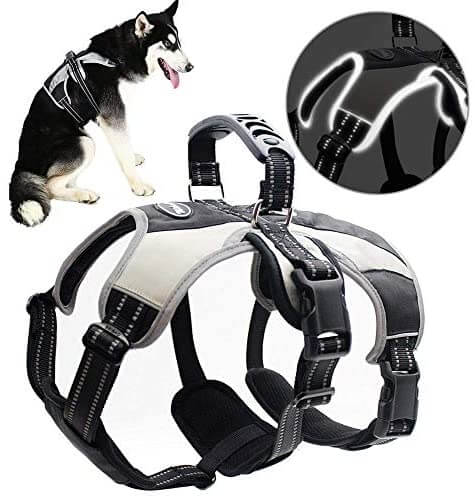
The Mihachi Secure Dog Harness is the perfect solution for adventurous dogs.
You can easily achieve the perfect fit using the five points of adjustment. This harness was designed to prevent escape without restricting freedom of movement for your dog. If you have an active dog, you can be sure that they have more than enough movement freedom.
This harness is made from a high-quality fabric that is both lightweight and durable. It is also washable, so you never have to worry about smells or stains. Chafing can be a real problem for dog harnesses. The Mihachi Secure Dog Harness has a special smooth finish on the fabric to prevent chafing and irritation.
Next to a sturdy handle for controlling and lifting your dog, you also get a big reflective strip that keeps him or her visible in the dark or bad weather. Check price here.
Our top recommendations.
Best overall.
If you are looking for the best overall dog harness that is also escape-proof, the Ruffwear Webmaster Harness is the one to get.
Ruffwear is known for producing extremely high-quality dog products. Their harness is no different. With three straps, a great fit, and high-quality materials, the Webmaster is the best escape proof dog harness you can buy right now.
Best value.
If you’re looking for a harness that combined great function with great value, we recommend the Cozy Meadow Escape Proof Dog Harness. This harness looks simple, but it’s well thought out, made of durable and comfortable materials, and almost impossible to escape. If you combine that with an amazing price point, you have a winning combination.
Why do dogs try to escape?
You might be wondering why your dog is trying to escape. After all, you’re just trying to take it for a walk.
There can be many reasons why dogs might try to escape. Let’s take a look at some of the most common ones.
They’re nervous.
Some dogs carry a lot of anxiety with them. It might not always show, but it comes out in certain situations, just like with humans. And when a dog gets nervous, it has only two options, aggression or flight.
If your dog is not an aggressive type, it will try to escape. So, if your dog is nervous or anxious on the street, it will be forced to try to escape from the leash.
They Were Never Properly Introduced to the Leash.
Proper leash training is more involved than you would think. If you got your dog from a shelter or second hand, it’s possible that it was never properly introduced to the leash.
If you trained it yourself, you probably know whether you did it correctly or not. A dog that was never properly trained will always have troubling associations. And in a lot of cases, these underlying associations will make a dog try to escape.
They Love to Destroy Things by Dhewing on Them.
If your dog loves to chew and destroy things, a harness can be an easy target. Not all dogs are destructive, and it also depends on the breed. Either way, in this case, all you need is a harness made of strong, durable materials. And you might also want to try to train your dog not to destroy things.
They’ve become Used to Escaping.
Escape can become a game or an act of defiance, especially for dominant dogs who try to test you. Walking on the leash doesn’t really jive with their feeling of dominance. So, they will try to avoid obeying you. If your dog manages to escape once, it has now found a way to challenge you successfully.
And if you don’t do anything about it, your dog will keep playing this game over and over again.
Their body shape makes them slip out of the harness easily.
Escape is not always done on purpose. Some dogs have tiny heads or slender bodies that don’t fit well in normal harnesses. Or, they are so flexible they can easily slip out of a harness.
Just pulling in the wrong direction can lead the leash or harness to become detached for these dogs. If your dog is a very lanky build or small head, it’s advisable to look for a harness for that particular shape or with a large range of adjustment.
What Are the Ways a Dog Can Escape From her Harness?
Most dogs managed to escape from their harness and either one of the two following ways.
Pulling Their Shoulders Free
Most dog harness is are designed to constrain your dog when he or she is pulling forward. When a dog starts to pull back, it can find enough space to wiggle its shoulder and legs through the straps.
Cutting The Straps With Their Teeth
Another way that dogs can escape is by chewing through the webbing or unclipping the buckles. If the harness doesn’t fit snugly on the body, a dog can reach it with its paws or teeth. In that case, it’s only a matter of time before it’s either destroyed or unclipped.
What Are The Different Designs of Escape-Proof Dog Harnesses?
Design 1: Front-clip Leash Attachment Harness
With this harness, the leash attachment point is on the dog’s front, usually at the chest. Now, you will be able to control a pulling dog a lot easier. You will also control your dog’s direction, which is ideal for navigating stressful situations like other dogs or traffic.
Design 2: Back-Clip Leash Attachment Harness
This harness has the leash clipped to the back of it. With the leash clipped to the back, the dog is free to walk around with minimal restriction. That is why this type is mostly used for smaller dogs, or dogs that are well trained and behaved. The back clip harness makes it harder to control a dog that wants to pull and is not very effective when trying to control a strong dog.
Design 3: Tightening Harness
A tightening harness can be a useful solution, but you should always be careful with it. A dog can easily get hurt when using this type of dog harness.
It works by increasing the pressure as your dog pulls harder. The idea is that the dog is punished for his behavior and will stop doing it. Unfortunately, it doesn’t always work that way.
Sometimes a dog will pull harder as it becomes more stressed and anxious. Another problem is that it will make your dog get used to the pain and discomfort and reduce the effect.
Then you will be forced to exert more pressure or more pain to get the same effect. Strong physical punishment used to be the norm for dog trainers. Nowadays, a lot of trainers have really switched to much more dog-friendly and effective methods.
Time needed: 5 days.
If your dog isn’t used to wearing a harness, it can be not easy to get it on at first. He or she will squirm or try to get it off because it just isn’t used to it.
With the following steps, you can feel comfortable and relaxed both when wearing the harness and when you are putting it on.
- Let her see and smell it.
If your dog isn’t used to wearing a harness, you’ll need to start slowly, or you risk creating a negative impression of it. So, take minimal steps with lots of rewards and cookies.
You can begin by just petting and letting him, or her check out the harness. You want your pooch to see the harness from all sides clearly.
It can also help to place a cookie or two on top of the harness. There’s nothing like cookies to create a positive association in dogs.
If the escape-proof harness features buckles, you want to clip and unclip the buckles so your dog can get used to the sound. All these things will help to reduce the surprise later on.
The less surprised your dog is, the more relaxed it will be, and the easier you can go through the next steps.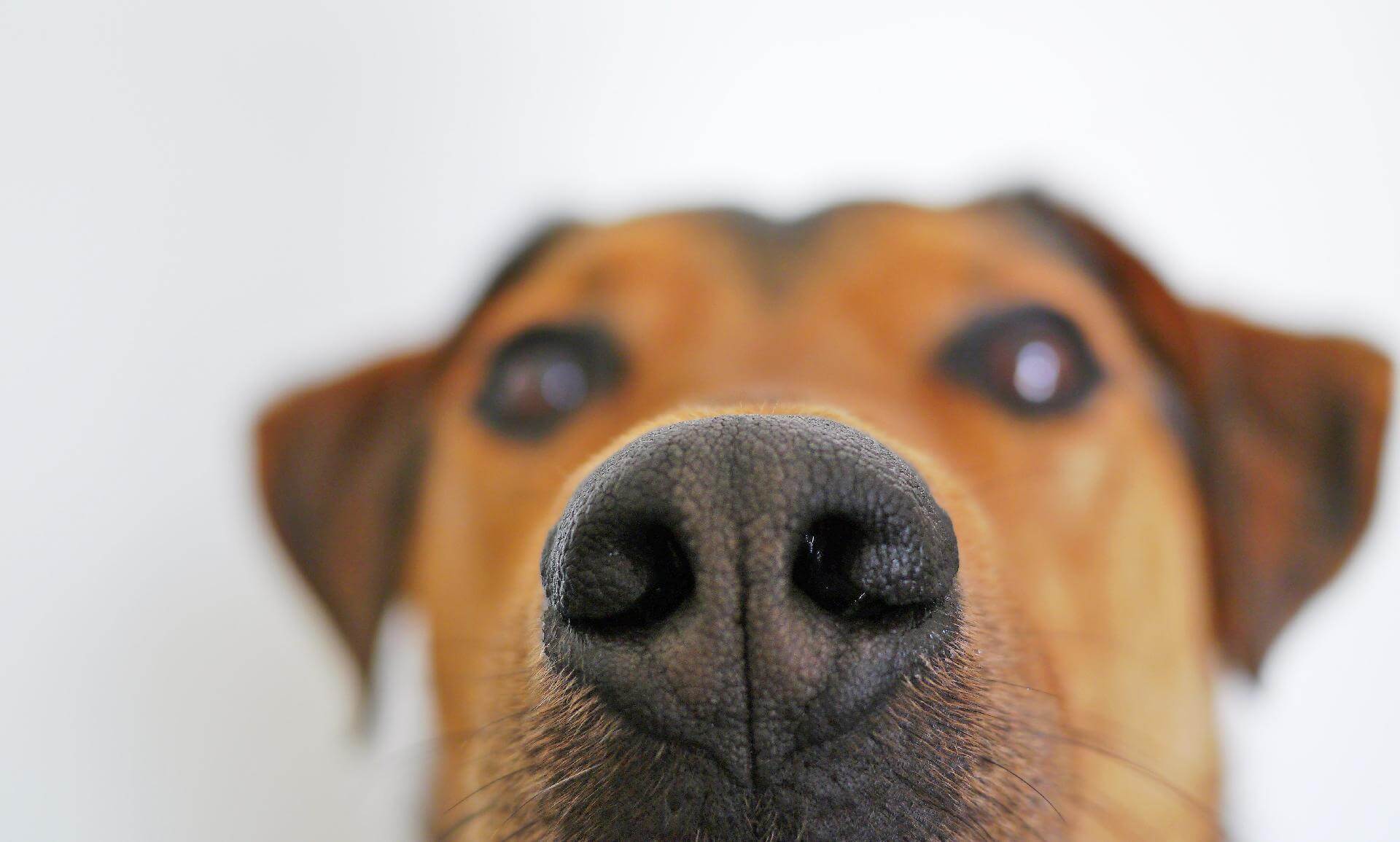
- Let her feel the harness.
Now your dog is used to the sight, sound, and smell; it’s time to take it one step further. Get close and make sure he or she is relaxed.
Now, gently place the harness on its back. If she doesn’t immediately pull away, give a reward.
Most dogs will be uncomfortable but allow it to happen. If yours immediately runs away or tries to get the harness off, don’t be alarmed. This is totally normal. You’re just going to have to try again.
First, bring him or her close to you again, give a reward, and then carefully place the harness on a different area of the dog’s body.
If you still can’t get your dog to accept the harness after 5 tries, it’s better to go back to the previous step than to keep on pushing. Do step one for a couple of days again. After that, come back to this step.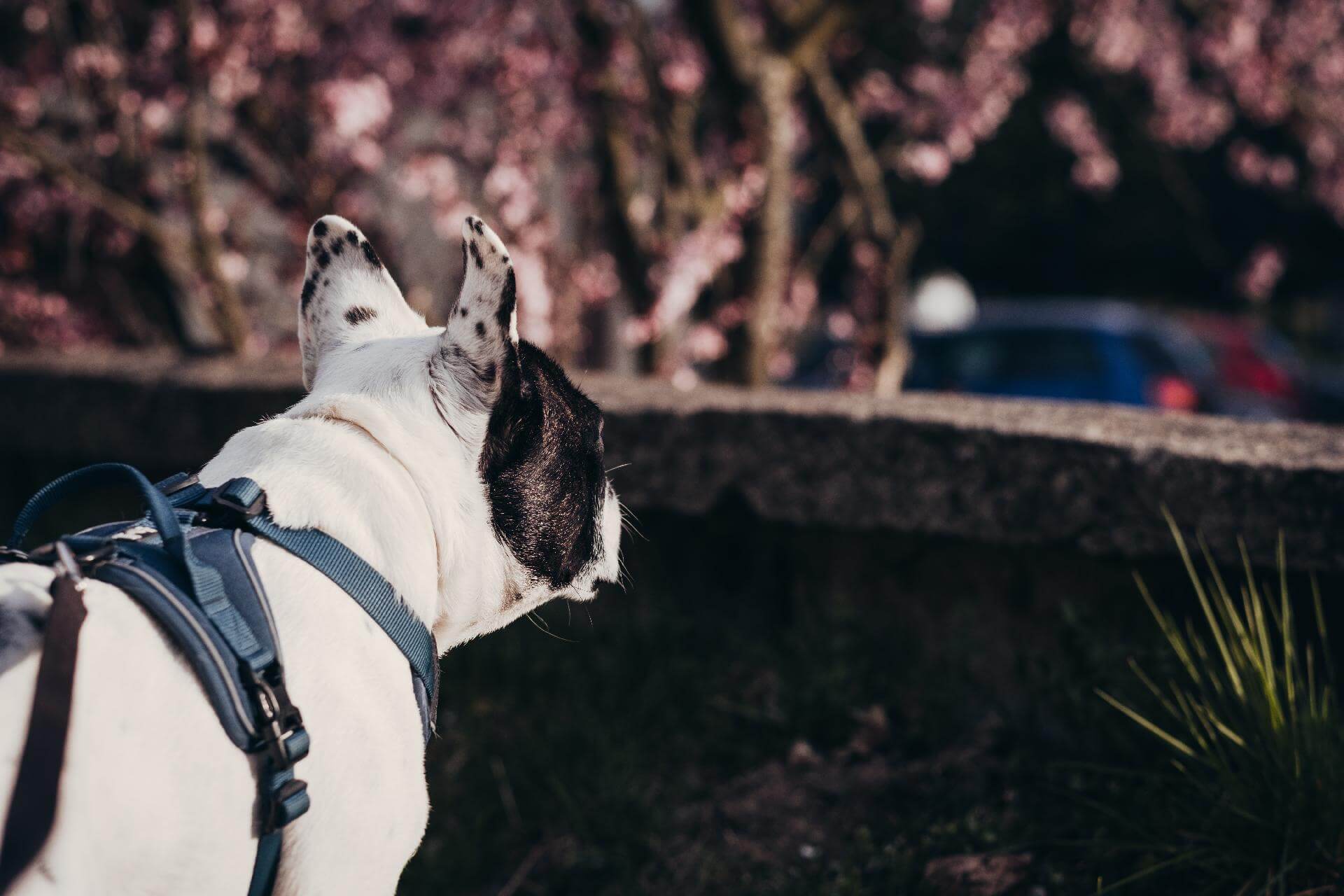
- Get her to walk into the harness
Once your dog is OK with feeling it on its back, it’s time to begin the next phase.
You don’t want to end up having to chase your dog every time you want to put the harness on. I’ve had that with one of my dogs. It’s very frustrating and can easily be avoided with some extra training.
The best way is to get your dog to walk into the harness. I like holding out a cookie in front of the opening, so the only way to get it is to go through the opening.
He or she might try to go around it, so you will have to maneuver slightly. Once you can get your dog to poke it had through the harness for the cookie, you will have made a massive step.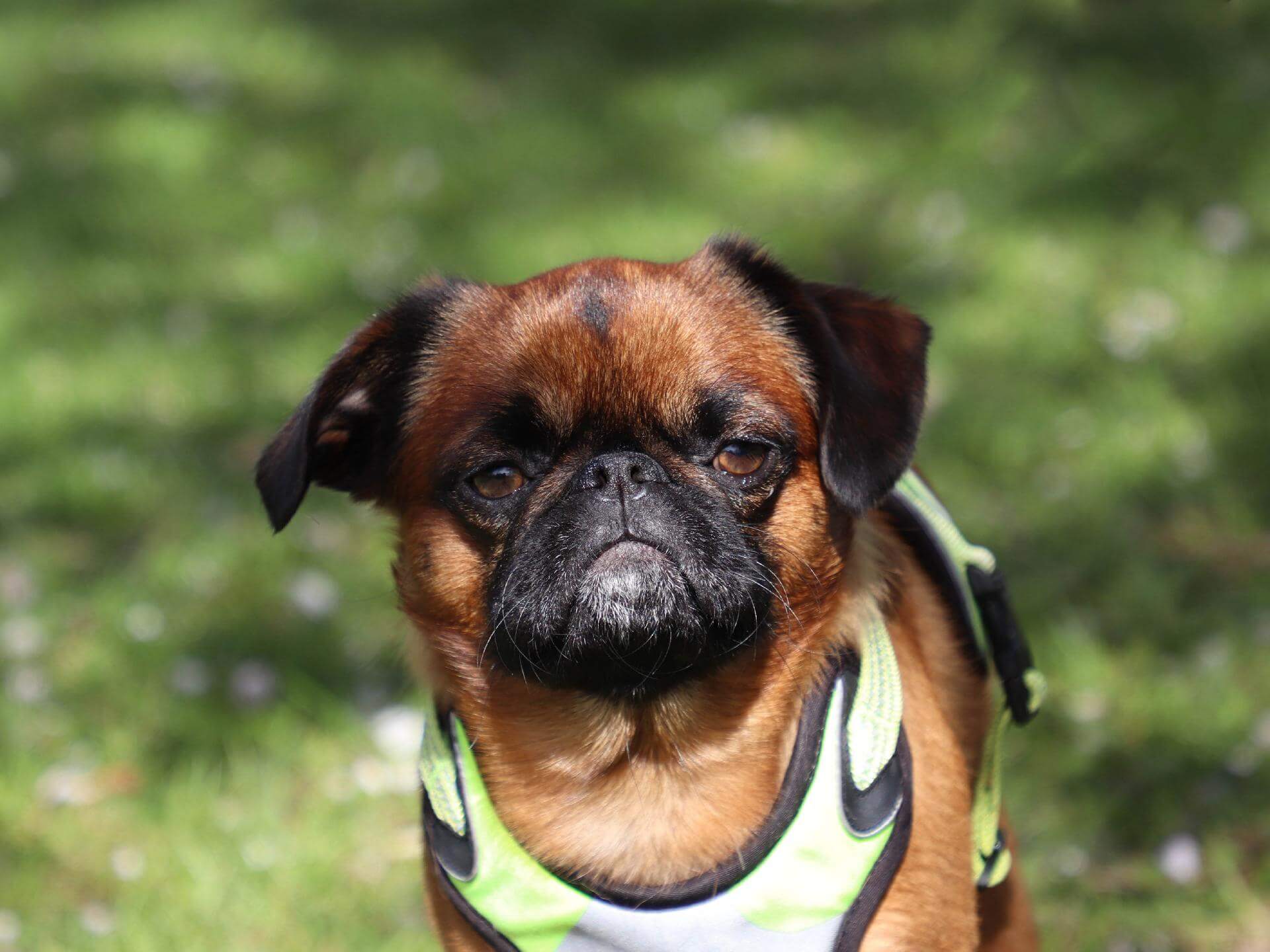
- Keep repeating the previous steps for a couple of days.
You might have noticed that we still haven’t fastened the buckles yet. This is important because fastening the buckles can really scare a dog. So before we get there, we want to establish as much of a positive base as possible.
Every day, bring your dog close a few times and place the harness on it back. Additionally, you also want to try to get it to poke its head through it. Once you can get to the point where he or she has no problem with either of those, you’re ready for the next step. - Tighten the harness and go for a walk
Now your dog is totally OK with the process of poking its head through the opening and having the harness sit on its back; you can start closing the buckles.
At first, make sure the buckles are not tight but just loosely fit around the body. If you get a negative reaction and your dog tries to escape, go back to the previous steps and try again in a couple of days.
Patience and consistency are everything in dog training.
Once you’re able to close the buckles, you can let your dog walk around in the house while wearing it.
And then you can also tighten it. At this point, you can try to attach the leash and take your dog for a walk.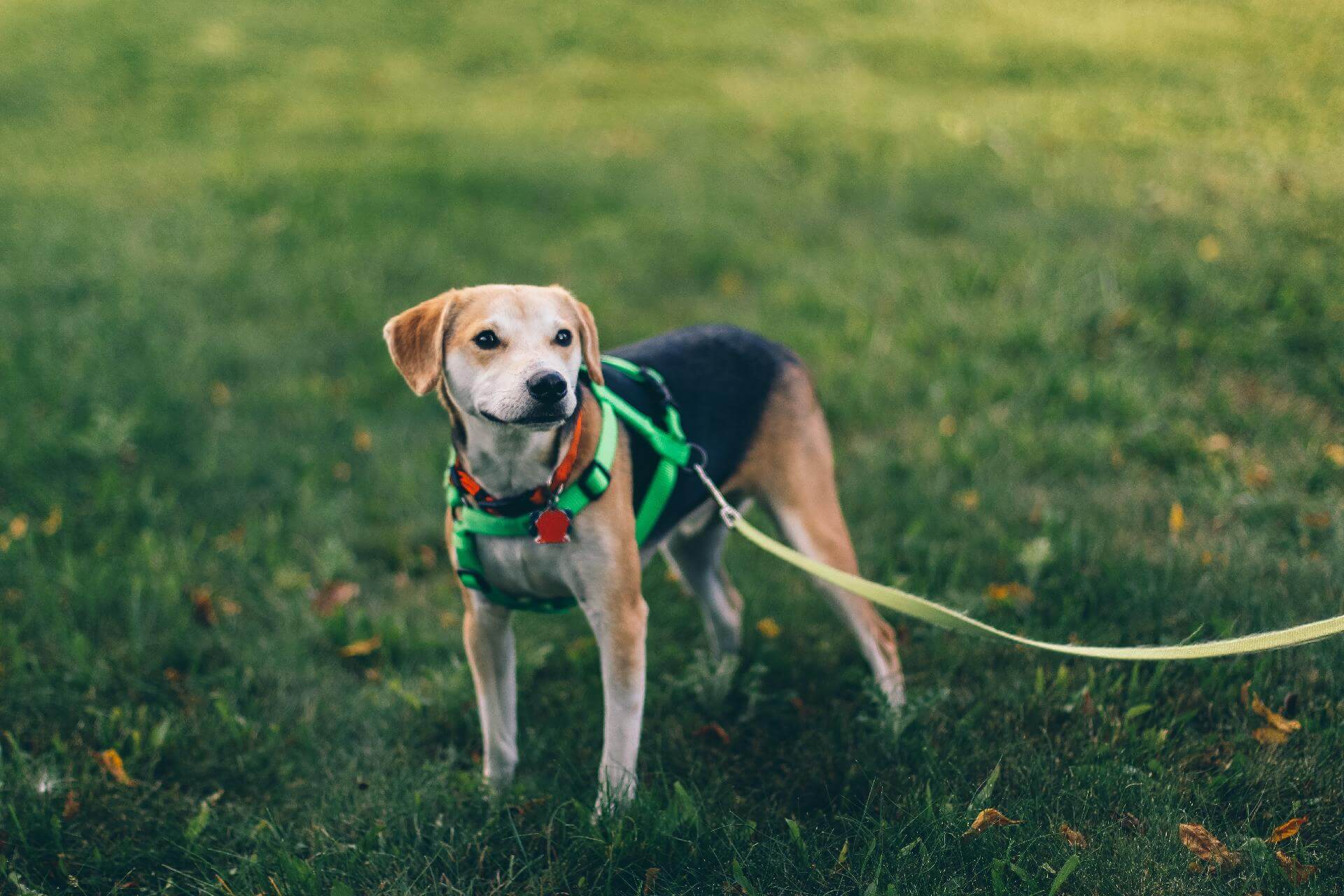
What makes The best escape proof dog Harness
If you are looking to buy a harness for your escape artist dog, you need to make sure it has the following features.
A great fit and Adjustability
Without a good fit, no harness will be able to prevent your dog from escaping. It will also not be comfortable. That is why you always want the first look for an escape-proof harness that has a great fit for your particular dog and or has the adjustability to make it fit.
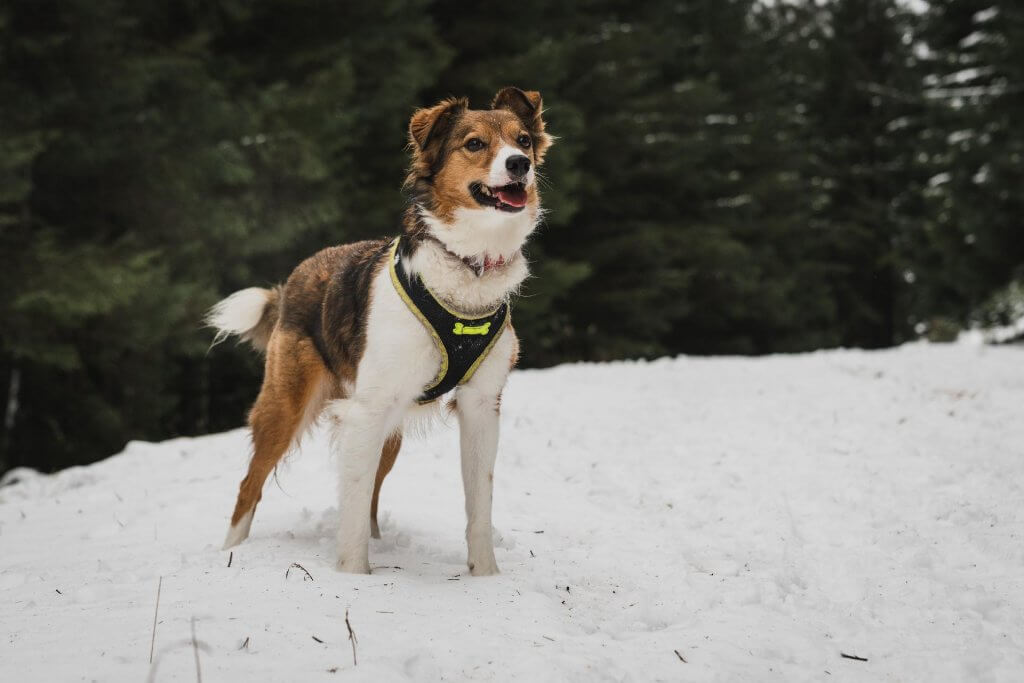
If you have the option of trying it out on your dog, always use that. Most online providers have a risk-free return policy. Don’t be afraid to use it even though it might seem like a lot of extra work; getting the right fit is paramount.
Durable and Comfortable Materials
A great escape proof dog harness needs to last more than a couple of months. It also needs to be comfortable for your dog. Because a harness fits so closely to your dog’s skin, the material plays a big part in its comfort.
You always want to prevent chafing or irritation. If your dog is wet, the material still needs to be comfortable. Some dog harnesses might come at a lot cheaper price, but you often pay for that in the durability and comfort of the materials used. You want a strong and pliable material that is smooth to the skin. Some of the best materials are leather, high-quality fake leather, and nylon webbing.
A well-positioned and strong handle
A good handle on the back is a lifesaver when you quickly have to control your dog. It’s also beneficial when you’re trying to help your dog or lift him or her into the car. You want a handle that is easy to grab, strong enough, and easy on their hands.
Make sure the handle has enough padding so it doesn’t hurt your hand when your dog is pulling hard, or you’re lifting her complete weight. Also, make sure that the handle is standing up instead of lying flat on the back. This will make it so much easier to grab in case of an emergency.
The Right Leash Attachment points
As we talked about before, the attachment of the leash can really influence your dog’s behavior. When you attach the leash to the back of your dog, he or she will be in the perfect position to pull, and a lot of dogs will gladly make use of that.
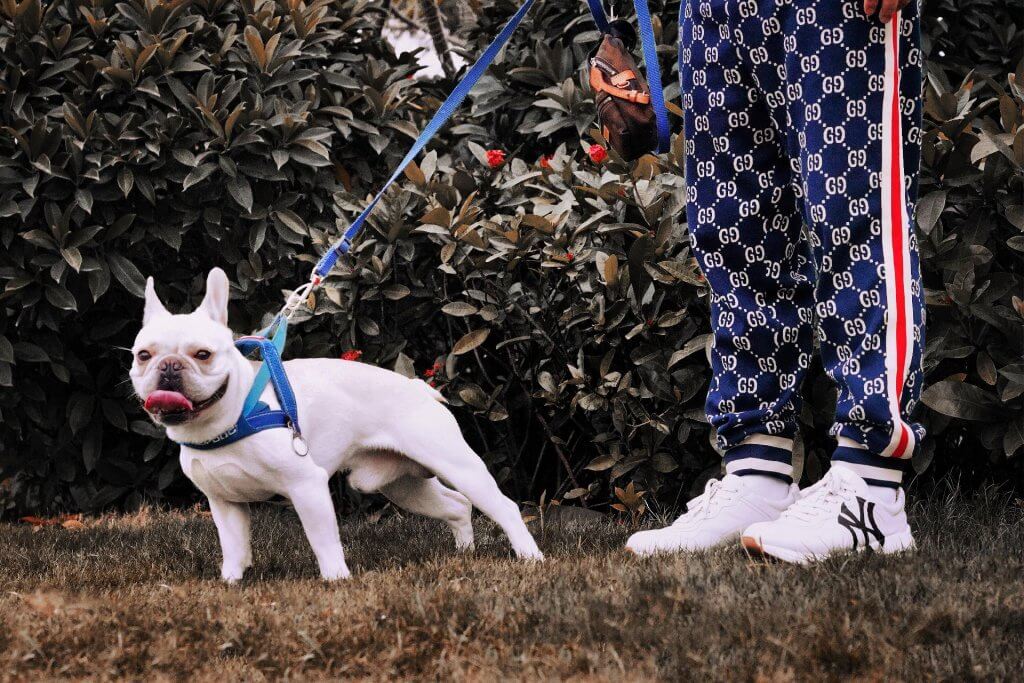
Sometimes that can be helpful, for example, if you’re trying to walk up a hill. Other times, this can be a real problem, like if you’re trying to get your dog to behave well under leash.
In that case, you want to make sure the harness has a chest connector. With the leash connected to the chest, you’ll be in a much better position to control its behavior. You can easily steer your dog, and it will be much harder for him or her to pull away from you.
Make sure the harness comes with different options. Even though you think that you only need a chest connector right now, you might run into a situation where you really want to connect the lease to the back.
Secure buckles
The buckles or connectors are critical when it comes to preventing your dog from escaping. No escape-proof harness will stay on if it becomes unbuckled.
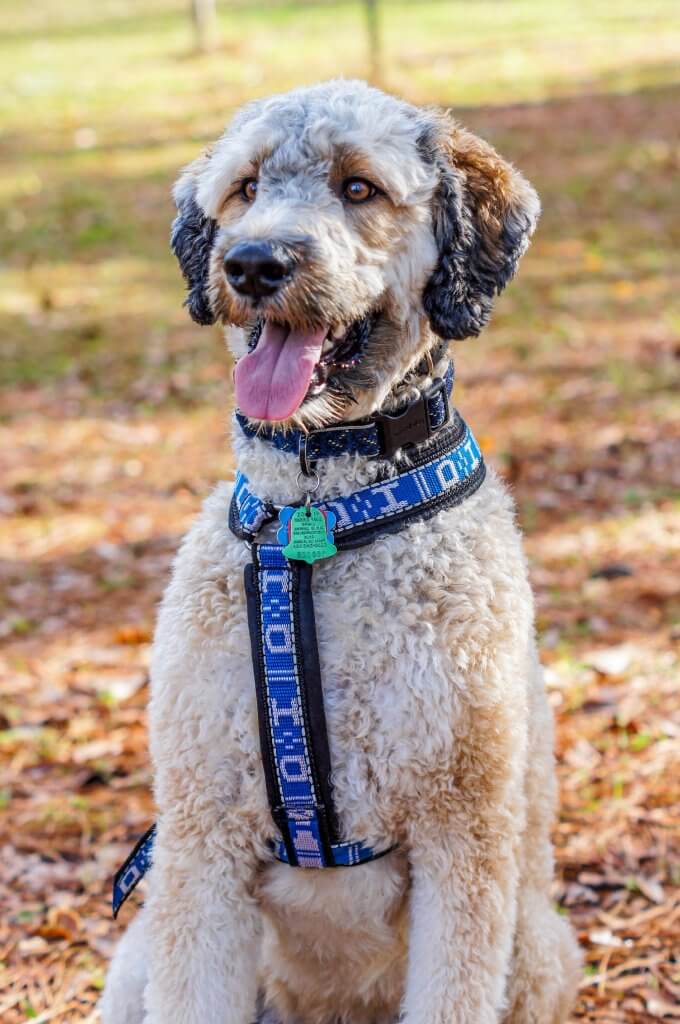
That is why you want to opt for a more secure connector, even if it’s less convenient to put on or off. Some dogs are extremely good at finding ways to disconnect or unclip the connectors. They might not be able to reach it with their teeth, but they can rub against obstacles or use their paws. I have even seen one dog help another other by opening the connectors.
Increased visibility
Did you know that about 1.2 million dogs get killed by cars every year?
That is an absolutely crazy number. In most cases, the driver has little to no time to respond because they never saw the dog coming.
If you combine that with bad weather and darkness, it’s easy to see why you want a dog harness with reflective and visibility features. All the harnesses on our list have reflective strips or material, which will greatly enhance visibility.
You can also improve your dog safety by attaching a light. A simple or flashing light can make the difference between a driver being able to avoid your dog or a terrible accident.
Frequently Asked Questions About Escape Proof Dog Harnesses
If the harness was designed properly and fits properly, it will not hurt your dog. It will merely exert pressure against your dog’s body without restricting the throat or lungs. Most dogs don’t like the feeling of a tightening harness, and I wouldn’t suggest it as a go-to solution.
A simple way to test the fit is by sliding two fingers between the straps and your dog’s body. It should feel pretty snug because too much space will make escape a lot easier. You also want to test all the straps and not just one.
If your dog is not used to wearing a harness, it can complain about the tightness. Don’t give in. Your dog will get used to it soon. Without a snug fit, most escape-proof harnesses will be useless.
No, I would not recommend that. A harness fits close to the body and doesn’t allow your dog’s skin to breathe fully. Moisture and bacteria can accumulate underneath it.
You always want to take the harness off when it’s no longer necessary.
Yes, that is possible. Whether it’s a useful solution, I am not so sure. If you have a well-fitting harness, there is really no need for a collar. It can only get in the way when you are attaching the leash.
No, dog harnesses do not encourage pulling. A harness is less uncomfortable for a dog to pull on, and that will make him/her pull harder. But, the reason your dog is pulling is not that it’s wearing a harness.
The reason is that your dog is not properly leash trained or has issues with other dogs. And until you find a way to solve that, your dog will keep pulling no matter how uncomfortable the collar or harness.
